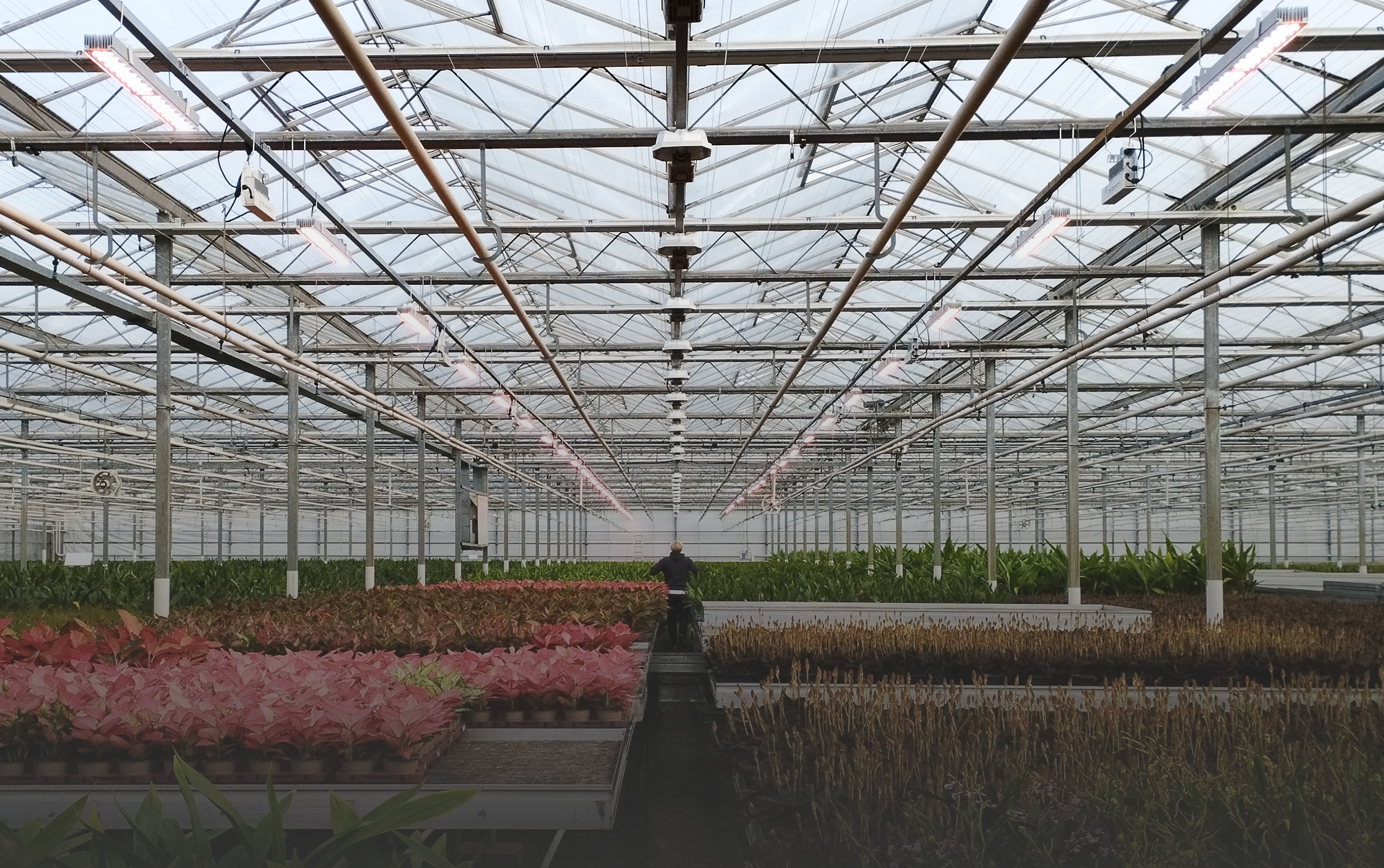Research
Articles
Together with the grower Pawel Jacewicz, we compared two light levels, 130 µmol and 200 µmol, for herb production and found that the higher intensity supported greater plant growth. As a result, basil production time was reduced ~18 %. Next, we wanted to see if higher light levels could support higher pot densities and by doing so give more production per m2. Our aim was to evaluate basil standard production and compared it to higher density under higher light.
For basil, both levels of supplemental lighting and density supported healthy, uniformed, and high-quality plants. At the higher density, the basil grew taller but was still strong and the leaves were longer. The extra height and leaf size were welcomed features. At the end of the production, the quality of the produce meets the grower’s satisfaction.
When growing basil under higher density, the higher light intensity (200 µmol) can support more pots in less area and still provide quality plants. This opens up more opportunities to use other growing strategies.

Picture 1: Basil
There is still more to explore with the potential of LED supplemental lighting for leafy green production.

Pawel Jacewicz, Grower at Clay Lake, Bridge Farm Group

Ida Fällström, Plant & Light Expert, Heliospectra AB
Related content
Get in touch with us!
From custom light planning, to tailored quotes, and everything in between,
our team of horticulture experts are always ready to assist.







